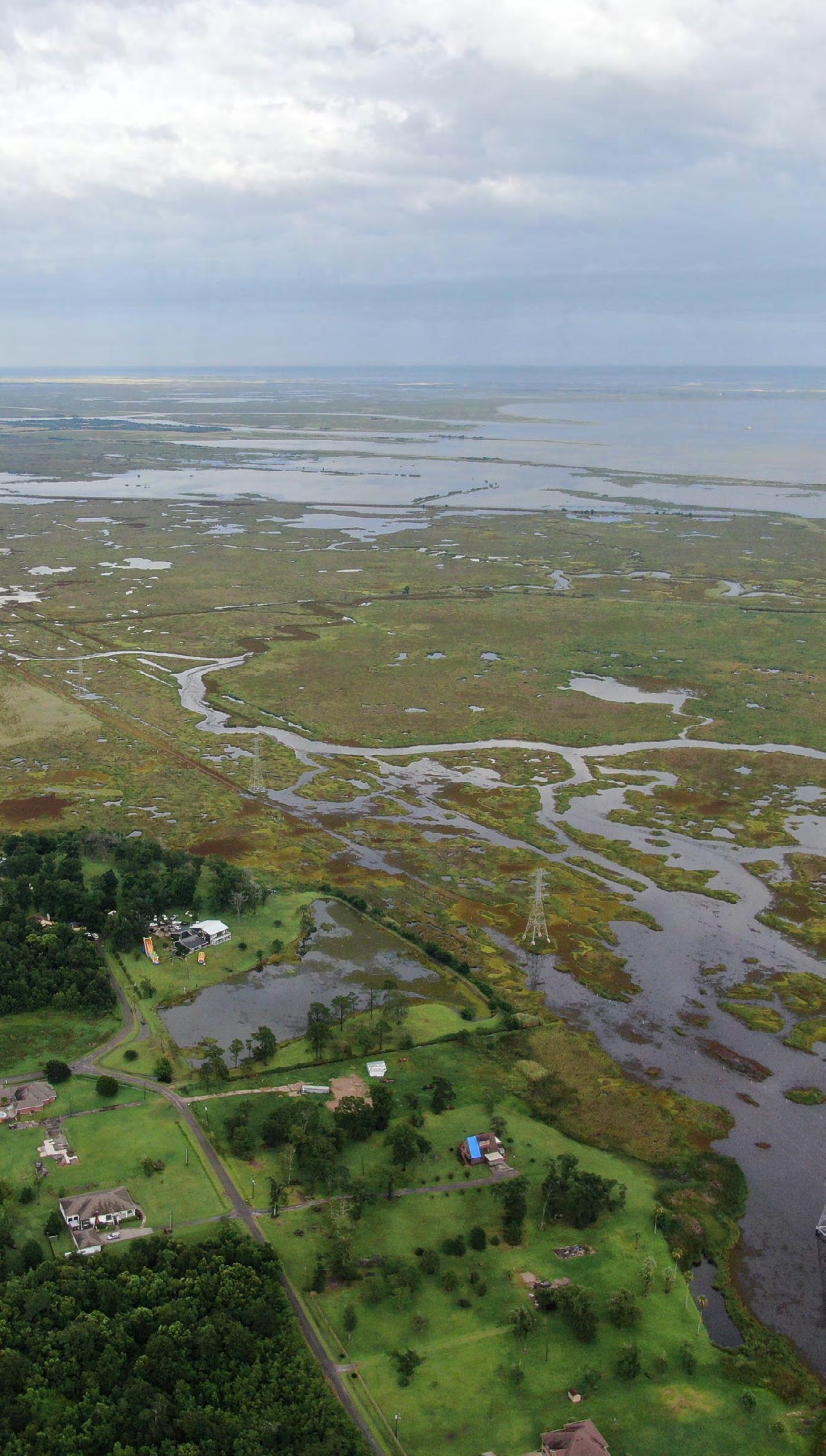
2 minute read
Engineering With Nature to Produce Horizontal Levees
$625 MILLION DURING SUPERSTORM SANDY IN FLOOD DAMAGE AVOIDANCE
Horizontal Levees offer a unique opportunity to create additional benefits in association with traditional approaches to Coastal Storm Risk Management (CSRM) projects. Rather than relying on the steep slope of a traditional levee system, these levees consider a more flat slope of added sediment — an augmentation to the traditional levee footprint. The resulting grade allows for high and low marsh plants to recruit, thereby colonizing the toe of the levee. The complementary addition results in wetlands that support the levee structure, further reducing wave impacts. The Sabine Pass to Galveston Bay CSRM and Ecosystem Restoration Project proposes an extensive network of levees and flood walls as part of the overall flood-risk reduction strategy. Orange County, Texas, is located in the study area, where 15.6 miles of traditional levees and 10.7 miles of flood walls are proposed. In this area alone, integrating 2.6 miles of horizontal levees would create more than 100 acres of new marsh habitat in locations where hundreds of acres of fragmented and/or degraded marsh currently exist that would benefit from this action. Nearby residents would be able to access the levee feature for birding, walking and other recreational activities. Dredged sediment derived from navigation channel maintenance would be used to construct the levees, offering a much improved method for managing sediment resources within coastal systems.

PROBLEM: Use of traditional levees for CSRM creates a near vertical barrier that prevents marsh vegetation from shifting as water levels increase within a given system. Marsh vegetation can be “squeezed” out of existence and a valuable natural resource is ultimately lost due to changes in environmental conditions over time. The barriers created by traditional levees also restrict the view shed and limit coastal communities from enjoying many social and cultural experiences.
SOLUTION: Engineering With Nature ® strategies were combined with a landscape architectural approach to horizontal levees, revealing additional economic, environmental and social value. Dredged sediment is used to create the horizontal levees that achieve CSRM goals, introduce compatible materials to the levee, and create a more purposeful slope for vegetation. Leveraging dredging events results in an economically-feasible means to maintain and adaptively manage the levees, keeping sediment in the system.
IMPACT: The recruitment of marsh within the footprint of the horizontal levee promotes additional resilience that protects adjacent coastal communities and industry with infrastructure valued in excess of $500 million. Following Hurricane Sandy, marsh was shown to produce more than $625 million in engineering value through avoided flood damage. Moreover, a marsh is more sustainable and will continue to support an approximately $200 million/year seafood industry in coastal Texas. And recent studies suggest that recreational amenities such as walking paths, create $3 to $10 in health benefits for every $1 spent to construct and maintain the feature.










